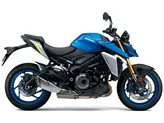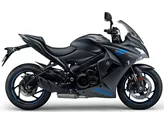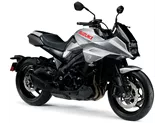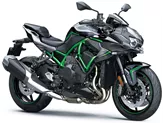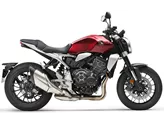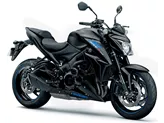Suzuki GSX-S1000 2016 vs. Kawasaki Z1000 2014

Suzuki GSX-S1000 2016

Kawasaki Z1000 2014
Overview - Suzuki GSX-S1000 2016 vs Kawasaki Z1000 2014
In terms of engine and drive train, both the Suzuki GSX-S1000 2016 and the Kawasaki Z1000 2014 have an inline engine with 4 cylinders and liquid cooling. However, the GSX-S1000 has a slightly higher engine power of 149 HP compared to the Z1000's 142 HP. The torque of the GSX-S1000 is 106 Nm, while the Z1000 has a torque of 111 Nm. Both bikes have a displacement of over 1000ccm, with the GSX-S1000 at 999ccm and the Z1000 at 1043ccm.
In terms of suspension, both bikes have upside-down telescopic forks in the front with adjustment options for compression, preload, and rebound. The rear suspension of both bikes also has adjustment options for compression, preload, and rebound.
In terms of chassis, both bikes have an aluminum frame. However, the GSX-S1000 has a twin tube frame type, while the Z1000 has a double cradle frame type.
For the brakes, both bikes have double disk brakes in the front with four pistons. The GSX-S1000 has radial technology for its front brakes, while the Z1000 has radial and petal technology for its front brakes.

Suzuki GSX-S1000 2016
In terms of dimensions and weights, both bikes have a front tire width of 120mm and a front tire diameter of 17 inches. The rear tire width is also the same at 190mm, with a diameter of 17 inches. The wheelbase of the GSX-S1000 is slightly longer at 1460mm compared to the Z1000's 1435mm. Both bikes have a seat height of 815mm. The fuel tank capacity of the GSX-S1000 is 17 liters, while the Z1000 has a slightly smaller capacity of 15 liters.
Now, let's compare the strengths and weaknesses of each bike.
The Suzuki GSX-S1000 2016 has a powerful engine, providing 149 HP and 106 Nm of torque. It also has good braking control with double disk brakes and four-piston calipers. The chassis is stable and sensitive, allowing for precise handling. The seating position is comfortable, making it suitable for long rides. Additionally, the GSX-S1000 is relatively affordable compared to other bikes in its class.

Kawasaki Z1000 2014
On the other hand, the Suzuki GSX-S1000 2016 has a front end that some may find too aggressive or "too good" in appearance. It also has a throttle response that can be too sensitive in the lower rev range, which may require some adjustment from the rider.
The Kawasaki Z1000 2014 has a sophisticated design that is aesthetically pleasing. It offers extremely pleasant handling, allowing for a smooth and enjoyable ride. The bike also produces a pleasant sound, adding to the overall riding experience. The brakes on the Z1000 are also good, providing reliable stopping power.
However, one weakness of the Kawasaki Z1000 2014 is its high purchase price compared to the Suzuki GSX-S1000 2016. This may make it less accessible for some potential buyers.
In conclusion, both the Suzuki GSX-S1000 2016 and the Kawasaki Z1000 2014 have their own strengths and weaknesses. The GSX-S1000 offers a powerful engine, good braking control, stable chassis, and a comfortable seating position at a relatively affordable price. On the other hand, the Z1000 has a sophisticated design, pleasant handling, pleasant sound, and good brakes, but comes with a higher purchase price. Ultimately, the choice between the two will depend on the individual's preferences and priorities.
Technical Specifications Suzuki GSX-S1000 2016 compared to Kawasaki Z1000 2014
Pros and Cons in comparison
Pros and Cons in comparison
Suzuki GSX-S1000 2016
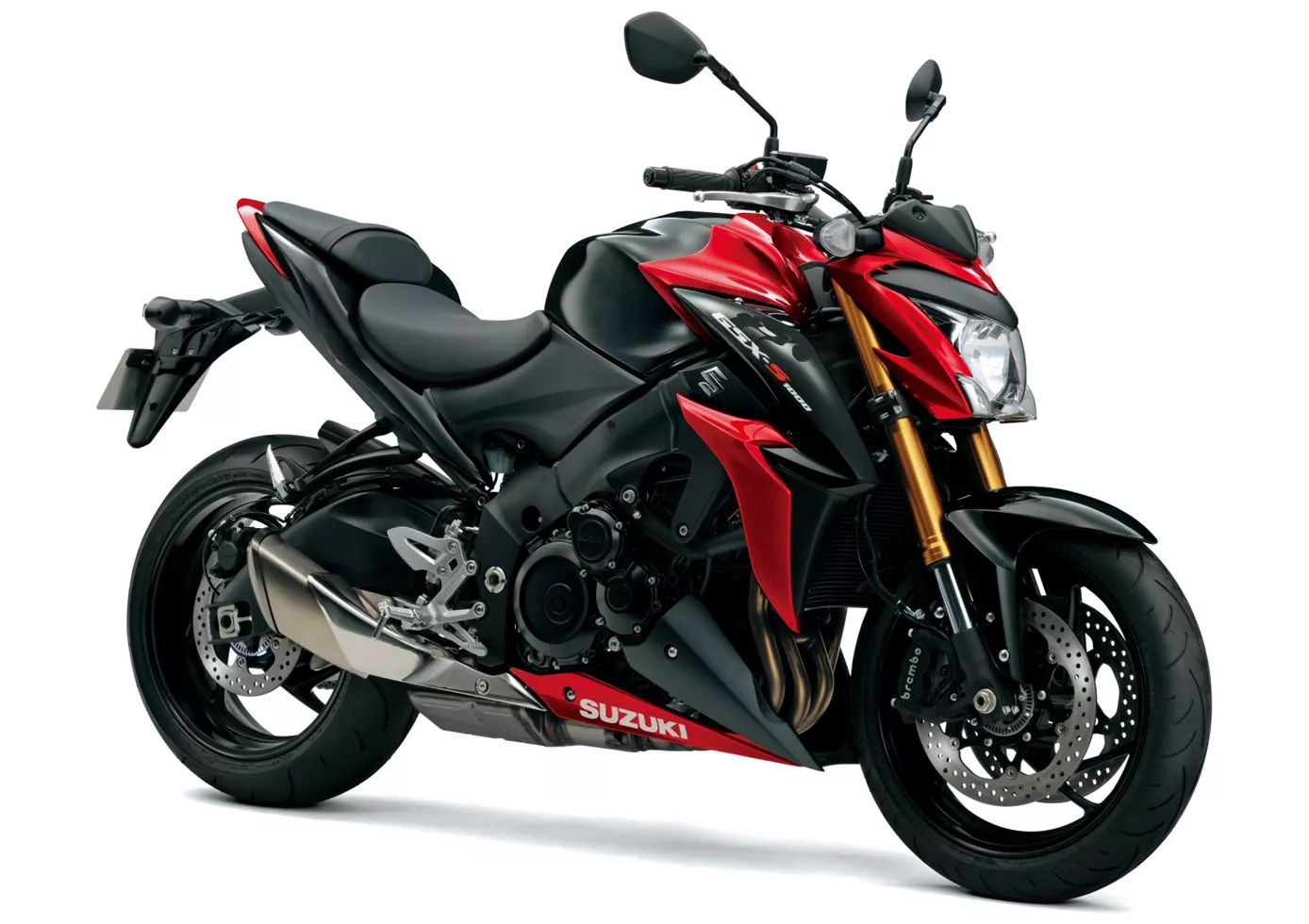
Some might be surprised that after waiting so long, Suzuki did not launch the ultimate, uncompromising power naked bike. Instead, the Suzuki GSX-S 1000 with its 149 hp seems almost too well-behaved. But once you ride it on the race track, you quickly realise that the engine is far more powerful in real life and that the rest of the performance of the chassis and braking system is also impressive. In return, it also offers a large portion of everyday and practical suitability - not bad ingredients when you have to cover everything from everyday to race track with a single bike.
Kawasaki Z1000 2014

The Kawasaki Z1000 (2014) is a statement against the electronic trend of its time - and that is exactly what makes it special today. Its characterful four-cylinder engine, mechanical directness and uncompromising focus on the essentials strike a chord in a time when many bikes have become rolling computers. Yes, it does without modern Advanced Rider Assistance Systems and perfect wind protection. But it offers an authentic naked bike riding experience, paired with Japanese reliability and reasonable maintenance costs. The Z1000 is not a bike for data sheet junkies or electronics fans - it is a bike for people who still want to make their own decisions when rider. An honest bike with character that continues to inspire even after years and more than fulfils its role as an emotional alternative to the digital modern age.
Price Comparison Avarage Market Price Suzuki GSX-S1000 vs Kawasaki Z1000
There are a few key differences between a Suzuki GSX-S1000 2016 and a Kawasaki Z1000 2014. In terms of price, the actual average price of a Kawasaki Z1000 2014 is about 6% higher. A Suzuki GSX-S1000 2016 experiences a loss of 90 GBP in one year and 1,340 GBP in two years of ownership. This is offset by a loss of 660 GBP and 490 GBP for a Kawasaki Z1000 2014. Compared to Kawasaki Z1000 2014 there are less Suzuki GSX-S1000 2016 bikes available on the 1000PS.de Marketplace, specifically 10 compared to 12. It takes less time to sell a Kawasaki Z1000 with 75 days compared to 109 days for the Suzuki GSX-S1000. Since model year 2015 1000PS.de editors have written 36 reviews for the Suzuki GSX-S1000 and 41 reviews for the Kawasaki Z1000 since model year 2005. The first review for the Suzuki GSX-S1000 was published on 27/09/2014 and now has more than 17,100 views. This compares to more than 5,800 views for the first review on Kawasaki Z1000 published on 02/09/2002.






